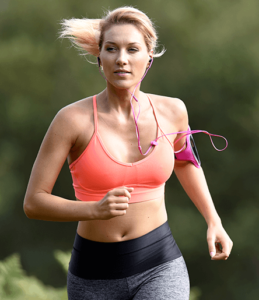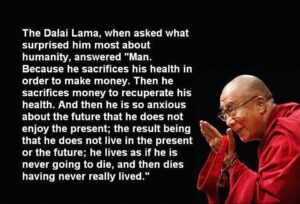How your body is balanced.
So our body is a wonderful balance of tension and compression – it’s called Bio tensegrity for your body.
The term tensegrity was actually coined by Buckminster Fuller, who was an architect way back in the day. He coined and termed and developed the philosophy, and he was a developer of thousands of structures.
A good one to think about is a geodesic dome in Montreal. That kind of shows you how tension and compression works.
So when a tensegrity structure is working really well, it’s got some components that happening:
- It’s omnidirectional.
- Its base form is a triangle.
- It has a maximum stability with just a minimum material.
- The size is theoretically unlimited.
- It’s non-linear.
- It’s low energy consumption.
- The strength and resilience of the whole, exceeds in some of its parts.
- Then the applied load is distributed throughout the structure.
- It’s a rigid structure, but with discontinuance compression I
- It’s a flexible structure but with continuous tension.
The best way to think about this is the Golden Gate Bridge. So it’s built with a tensegrity philosophy.
So imagine the bridge – we have all the different cables and bolts, and all these different struts – all this stuff is at work, it needs to do its job, so it’s flat and cars can drive across.
Now imagine it’s off, it’s too loose or something is too strong or too weak, whatever the case may be, now it’s tilting and now the cars can’t drive around.
So it’s the same thing in our body. If we are off in one of those points, our function is going to suffer because our structure dictates our function.
The trick is knowing what you need to do and why. In general you of course want to make sure that the front of your body, the back of your body and the two sites are in balance. Balanced structurally and even with strength and flexibility.
Having one side “better” than the other will eventually lead to a lot of disfunction.
But don’t forget the diaphragms in your body as they act like roofs, ceilings and basements in your body. The four main diaphragms:
- cervical
- cervical-thoracic
- thoracic
- pelvic diaphragms
are all made of soft tissue and bone, but more importantly are connected to the different sides of your body to help them stay balanced.
If they are off then even though your have balanced all your sides with proper stretches and strengthening exercises, you will be off balance.
I know this is a lot to take in, but I want you to get an idea of the complexity that the body works with and to read more about this so that you can get a better idea on how to really train your body.
I know it’s a lot to take in, so I want you to go to our website solcorefitness.com
Read more information about the different aspects you need to have a balanced body.
Find out more @



Leave a Reply